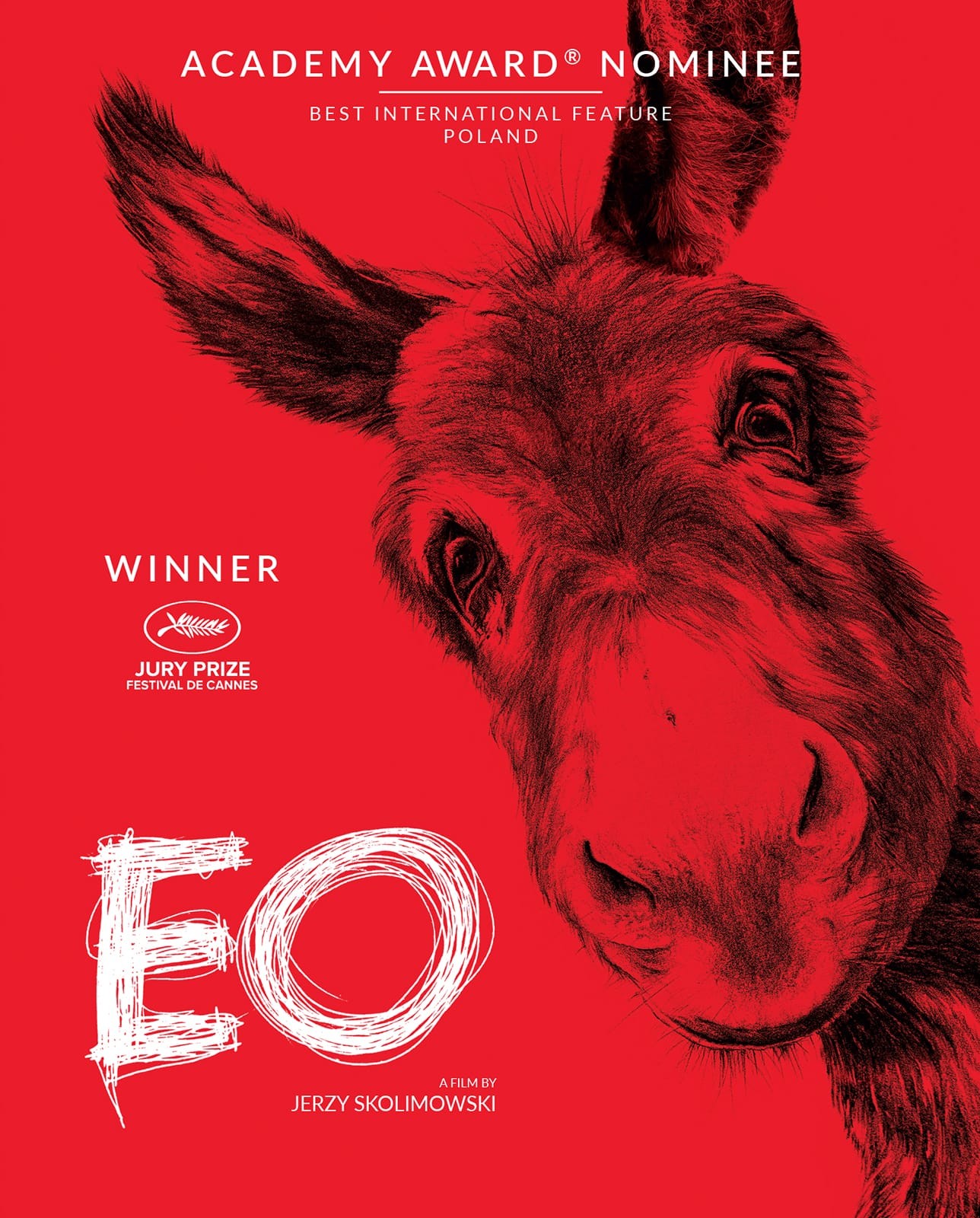We review the Janus Contemporaries Blu-ray release of Jerzy Smolikowski’s Eo and compare it to the digital HD release.
Read our TIFF 2022 review of Jerzy Smolikowski’s Eo
Listen to our in-depth podcast episode on Eo

Discover one film you didn’t know you needed:
Not in the zeitgeist. Not pushed by streamers.
But still easy to find — and worth sitting with.
And a guide to help you do just that.
Physical media releases of international arthouse films are becoming increasingly rare, rarer still on Blu-ray, and even more rare, at an affordable price (especially Canada). Janus Contemporaries, the new sub-label from Janus/Criterion which releases copies of films distributed in North America by Janus, is at the intersection of these much-desired traits.
Cinemaguild and Grasshopper are the distributors that come closest to releasing boutique arthouse titles — almost their entire catalogue — with lovely Blu-ray transfers, but especially in Canada, they tend to run for $40CAD+. In North America, most arthouse distributors manage only an HD VOD release, a DVD release at best (most of the excellent Film Movement library), and DVD only for films that seem niche (e.g., this year’s Four Quartets from Kino Lorber, which regularly releases Blu-rays and Revoir Paris from Music Box Films, perhaps its only DVD-only release of the year).
Janus Contemporaries has thus far released Blu-ray editions for all of its titles and at an affordable price around $30 — yes, even in CAD. That makes it more affordable than the Criterion Collection and only slightly more expensive than some wider releases. (Fortunately, there are no pre-roll adds.) The label is still relatively new, dating to 2022, but boasts several Seventh Row favourites including Eo and The Eight Mountains. They only just started releasing physical media this year, which explains the nigh year-long wait for Eo.
Jerzy Smolikowski’s Eo was one of the very best films of 2022 — in my personal top 5 list — and also one of the most visually stunning and aurally engaging. I reviewed the film back at TIFF 2022. On the Seventh Row podcast, Orla Smith, Brett Pardy, and I went deep on the film, how Smolikowski generates empathy for a donkey, and how the film fits into the pantheon of films about animals and donkeys — from its direct inspiration, Au hasard balthasar, to the recent Lean on Pete and beyond.
Perhaps part of how Janus Contemporaries keeps its releases affordable is by skimping on the special features — though that’s increasingly true of the Criterion Collection, too. The disc features a brief moderately illuminating 29-minute interview with writer-director Smolikowski and co-writer Ewa Piaskowska. There’s also a short featurette immortalizing Smolikowski’s unbeatable acceptance speech at Cannes alongside some brief insights about casting the donkeys. The brief essay included in the leaflet is more cursory than many of the reviews of the film.
Nevertheless, the main reason, from my perspective, to invest in a Blu-ray of a beloved film, especially one as cinematic as Eo, is for the superior picture quality and sound. DVDs are a bit of a tradeoff — better sound, less compression overall, but ultimately still an SD image when HD has become the standard for digital releases. The Eo Blu-ray delivers. Maintaining the film’s original aspect ratio of 1.33:1 (the British release bafflingly uses the IMAX aspect ratio) and offering a 5.1 Surround Sound mix, this is certainly the way the film was meant to be seen outside of a cinema. As you would expect, the image is crisp, the colours rich with strong contrasts — the reds that pervade the film are especially lovely, and never seem over- or under-saturated. The score is richly rendered with bass that will hit you in the feels, but the sound is also crisp and rich across all frequencies.
When deciding whether to invest in physical media — especially if I’m not imminently worried that a film will disappear — the critical factor for me is whether it’s noticeably better than a digital copy. I have to justify the expense and the space in my small downtown space. As soon as I pressed play on the Blu-Ray, I was aware of the image’s crispness and the sound’s fullness.
I did a side-by-side comparison with the digital release — including what you’d get by streaming the film on the Criterion Channel, which is how most cinephiles are likely to come to it for the first time. My HD copy (at nigh 3 GB) was softer around the edges, with image compression noticeable in a side-by-side comparison. If I’d been watching the digital copy without having the superior option of the Blu-ray, I probably wouldn’t have minded much even as there are noticeable minor details lost and breaks in the image. But even without looking at the digital copy first, the Blu-ray was, as expected, crisper thanks to reduced compression.
Even more important than the image though, for me, is the sound. I want to be immersed in a film’s soundscape. If you’re listening to the film from tinny TV speakers or a sound bar, you might not notice the difference between the digital release and the Blu-ray. Even without a 5.1 surround system (like most Blu-rays, there is no 2.1 mix available), my B&W stereo that I have connected to my TV ensured that the Blu-ray sound was very obviously of higher quality — maintaining a balanced soundscape throughout, capturing both the range of the score and the finer details of the sound design (e.g. the first trailer door slamming on Eo as he’s taken away from his loving owner) hit harder than in the digital copy.
Eo is an unmissable film, and based on the quality of this early Janus Contemporaries release, I’m keen to see what they do next for other favourites.

